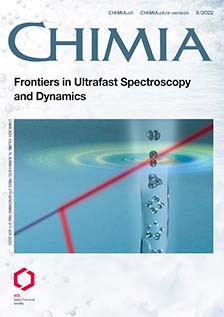Attosecond Photoionization Dynamics: from Molecules over Clusters to the Liquid Phase
DOI:
https://doi.org/10.2533/chimia.2022.520PMID:
38069721Keywords:
attosecond spectroscopy, photoionization delays, molecular photoionization, water clusters, liquid water, electron scatteringAbstract
Photoionization is a process taking place on attosecond time scales. How its properties evolve from isolated particles to the condensed phase is an open question of both fundamental and practical relevance. Here, we review recent work that has advanced the study of photoionization dynamics from atoms to molecules, clusters and the liquid phase. The first measurements of molecular photoionization delays have revealed the attosecond dynamics of electron emission from a molecular shape resonance and their sensitivity to the molecular potential. Using electron-ion coincidence spectroscopy these measurements have been extended from isolated molecules to clusters. A continuous increase of the delays with the water-cluster size has been observed up to a size of 4-5 molecules, followed by a saturation towards larger clusters. Comparison with calculations has revealed a correlation of the time delay with the spatial extension of the created electron hole. Using cylindrical liquid-microjet techniques, these measurements have also been extended to liquid water, revealing a delay relative to isolated water molecules that was very similar to the largest water clusters studied. Detailed modeling based on Monte-Carlo simulations confirmed that these delays are dominated by the contributions of the first two solvation shells, which agrees with the results of the cluster measurements. These combined results open the perspective of experimentally characterizing the delocalization of electronic wave functions in complex systems and studying their evolution on attosecond time scales.
Funding data
-
European Research Council
Grant numbers 307270;772797 -
H2020 Marie Skłodowska-Curie Actions
Grant numbers 801459 - FP-RESOMUS
Downloads
Published
Issue
Section
License
Copyright (c) 2022 Xiaochun Gong, Inga Jordan, Martin Huppert, Saijoscha Heck, Denitsa Baykusheva, Denis Jelovina, Axel Schild, Hans Jakob Wörner

This work is licensed under a Creative Commons Attribution 4.0 International License.







